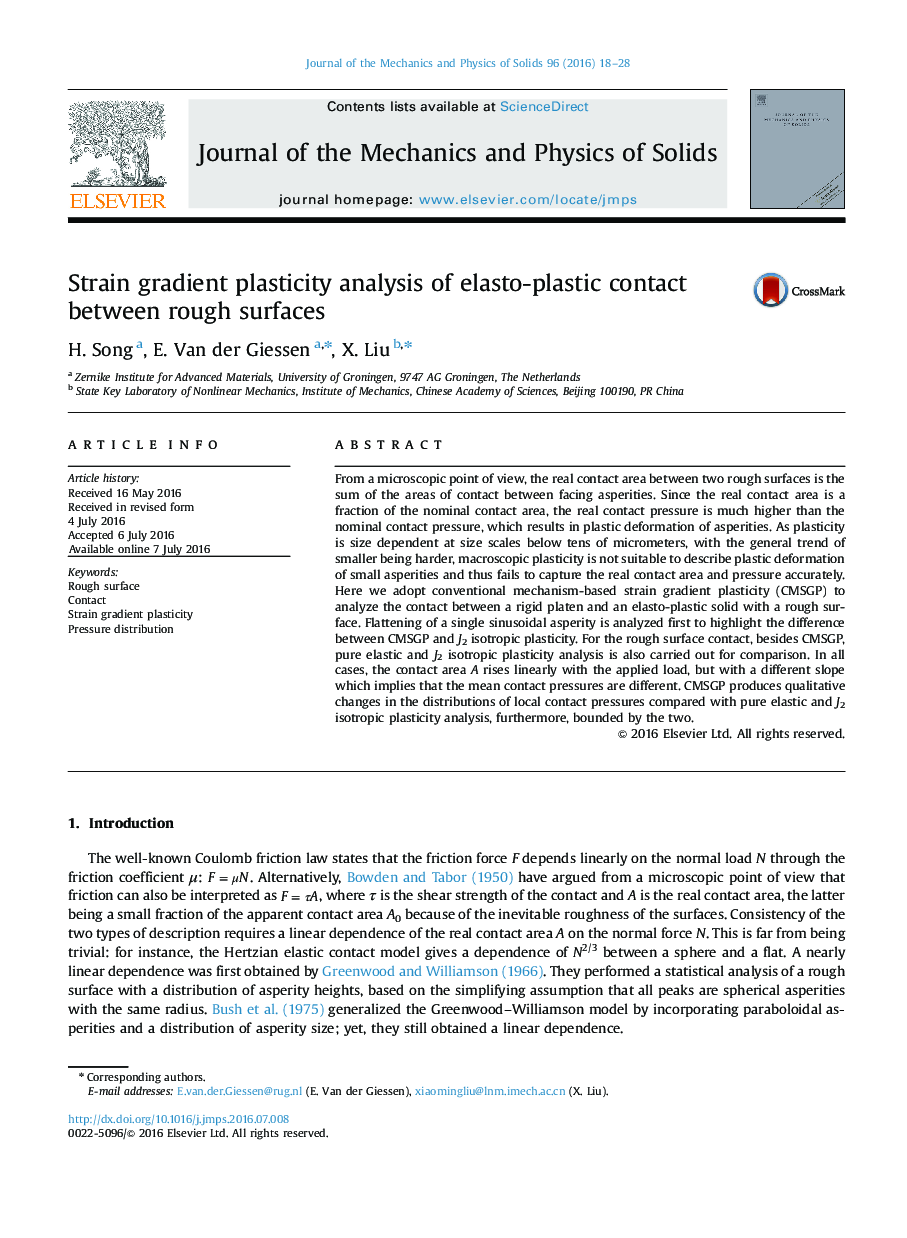| Article ID | Journal | Published Year | Pages | File Type |
|---|---|---|---|---|
| 797710 | Journal of the Mechanics and Physics of Solids | 2016 | 11 Pages |
From a microscopic point of view, the real contact area between two rough surfaces is the sum of the areas of contact between facing asperities. Since the real contact area is a fraction of the nominal contact area, the real contact pressure is much higher than the nominal contact pressure, which results in plastic deformation of asperities. As plasticity is size dependent at size scales below tens of micrometers, with the general trend of smaller being harder, macroscopic plasticity is not suitable to describe plastic deformation of small asperities and thus fails to capture the real contact area and pressure accurately. Here we adopt conventional mechanism-based strain gradient plasticity (CMSGP) to analyze the contact between a rigid platen and an elasto-plastic solid with a rough surface. Flattening of a single sinusoidal asperity is analyzed first to highlight the difference between CMSGP and J2 isotropic plasticity. For the rough surface contact, besides CMSGP, pure elastic and J2 isotropic plasticity analysis is also carried out for comparison. In all cases, the contact area A rises linearly with the applied load, but with a different slope which implies that the mean contact pressures are different. CMSGP produces qualitative changes in the distributions of local contact pressures compared with pure elastic and J2 isotropic plasticity analysis, furthermore, bounded by the two.
